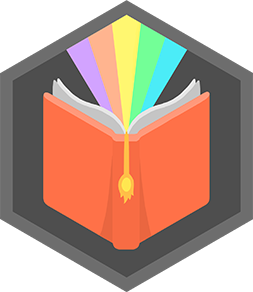Create your own language
Design and build your own simple language by inventing sounds, alphabet symbols, basic grammar, and vocabulary, then write and decode secret messages.



Step-by-step guide to design and build your own simple language
Step 1
Pick a cool name for your language and write it at the top of a new page.
Step 2
Think of six new sounds for your language and say each one out loud.
Step 3
Write the six sounds on your paper and add a simple English clue for how to pronounce each sound.
Step 4
Draw one unique symbol for each sound using your pencil and ruler if you want straight lines.
Step 5
Write each symbol next to the matching sound so you can see which symbol makes which sound.
Step 6
Choose the basic sentence order (for example Subject-Verb-Object) and write that rule down.
Step 7
Decide one way to show plurals and write that rule (for example add a symbol at the end).
Step 8
Create a list of 15 basic vocabulary words in English and write the word in your new language next to each English word.
Step 9
Make flashcards by drawing the symbol or word on one side of an index card and the English meaning on the back.
Step 10
Write three secret messages using only your symbols and the grammar rules you made.
Step 11
Use your alphabet and grammar guide to decode one of the secret messages you wrote or one a friend gave you.
Step 12
Take a picture or write a short post about your language and share your finished creation on DIY.org.
Final steps
You're almost there! Complete all the steps, bring your creation to life, post it, and conquer the challenge!


Help!?
What can we use if we don't have index cards, a ruler, or a camera for the sharing step?
Use cut-up cereal box or cardstock for flashcards instead of index cards, use the edge of a book or a straight piece of cardboard as a ruler when drawing symbols with your pencil, and if you can't take a picture for DIY.org write a short post describing your language and upload scans or drawings instead.
I'm having trouble making six distinct sounds or symbols—how can I fix that?
Choose six clearly different English-based phonemes and write simple pronunciation clues, practice saying each one out loud, draw very different symbols with your pencil (use the book-edge ruler for straight lines), then make flashcards and test them by writing and decoding a secret message to spot confusion.
How can this activity be adapted for younger or older kids?
For younger kids, limit the task to three sounds, big symbols drawn with crayons, and simple flashcards from cut paper, while older kids can expand to more than six sounds, add extra grammar rules (like tense), type a vocabulary list, and record audio of pronunciations.
What are some ways to extend or personalize our new language after finishing the basic steps?
Illustrate each vocabulary word next to its symbol, decorate and laminate your flashcards, record audio clips of the six sounds to attach to cards or your DIY.org post, and write a longer secret story using your grammar rules for friends to decode.
Watch videos on how to design and build your own simple language
Ch.1 Hello | Ch.2 How are you? | Basic English Conversation Practice for Kids
Facts about language creation and linguistics
✍️ The oldest known writing system is Sumerian cuneiform, which dates back to around 3200 BCE.
🗣️ Esperanto, the most widely spoken constructed language, was created by L. L. Zamenhof in 1887.
🛸 Klingon was developed by linguist Marc Okrand for Star Trek and has its own grammar and vocabulary.
🔐 The Rosetta Stone (discovered in 1799) helped scholars decode Egyptian hieroglyphs because it showed the same text in three scripts.
🧠 There are thousands of constructed languages (conlangs), ranging from simple codes to fully detailed fictional tongues.
How do I help my child design and build a simple secret language?
What materials do we need to invent a language and write secret messages?
What ages is creating your own language suitable for?
What are the benefits of making a secret language with my child?


One subscription, many ways to play and learn.
Only $6.99 after trial. No credit card required



